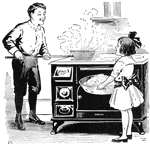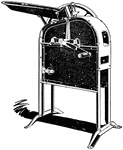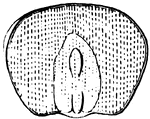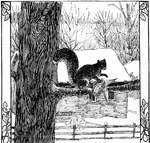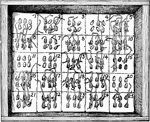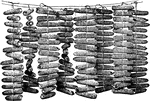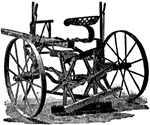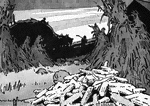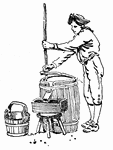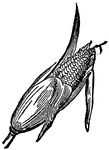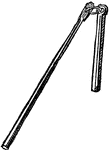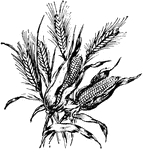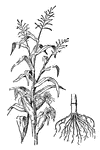
Indian Corn
Indian Corn or Maize is a well known species of cereal. It is used as food and is gathered in October…
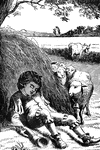
Little Boy Blue
Little Boy Blue, come blow your horn. The sheep's in the meadow, the cow's in the corn.

Little Boy Blue
Little Boy Blue, come blow your horn. The sheep's in the meadow, the cow's in the corn. Where's the…
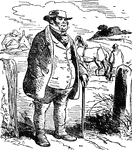
House that Jack Built—Farmer
This is the Farmer that sowed the corn, that kept the Cock that crowed in the morn, that waked the Priest…

Foraging spoils
"Return of a foraging party of the Twenty-fourth Regiment, Connecticut Volunteers, with their spoils,…

Kentucky Shore
"The Federal Army, under General Pope, landing on the Kentucky Shore, opposite New Madrid, April 1st,…

Entering Clinton
"General McPherson entering Clinton, Miss. To facilitate the movements of the Federal armies near Chattanooga…
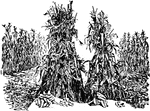
Ear-row Test
Yields of adjacent rows in an ear-row test, showing the difference in yielding power of two ears that…
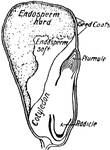
Kernel of Corn
Cross-section of a kernel of corn. Food is stored in the cotyledon and in the endosperm which surrounds…
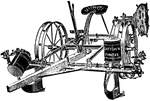
Check-Row Corn-Planter
A check-row corn-planter, which plants two rows at once and rows the corn both ways.
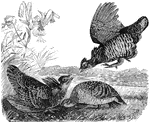
Prairie Hens
Prairie hens feed on grasshoppers, wheat, corn, seeds, and the buds of trees. They are also known as…
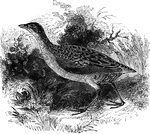
Land Rail
Generally inhabiting Europe, the land-rail is also known as the corn-crake. It averages about seven…
![The Yeoman House. This view is from the road, looking north. An attempt was made by a soldier to burn the house, but so rapid was the march of the invaders that the flames had made but little progress before the troops were far on their road to the village. An [African American] woman, who was concealed under some corn-stalks near, extinguished the flames. The house is about half a mile from the river, on the right side of the road from the landing to Kingston village.](https://etc.usf.edu/clipart/13500/13510/yeoman_13510_mth.gif)
Yeoman House
The Yeoman House. This view is from the road, looking north. An attempt was made by a soldier to burn…
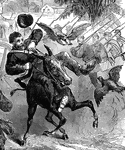
Foraging Spoils - Startled Horse
"Return of a foraging party of the Twenty-fourth Regiment, Connecticut Volunteers, with their spoils,…
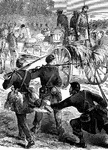
Foraging Spoils near Baton Rouge
"Return of a foraging party of the Twenty-fourth Regiment, Connecticut Volunteers, with their spoils,…
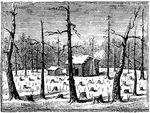
Cowpens
"Scene at the Cowpens. This name is derived from the cirumstance that, some years prior to the Revolution,…
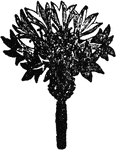
Corn flower
"The Corn flower is a well-known composite weed of cornfields, universally known and admired for the…
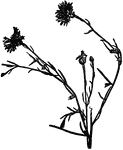
Corn flower
"The Corn flower is a well-known composite weed of cornfields, universally known and admired for the…

Date Palm
"Date Palm is a genus of palms, the most important species of which is the common date palm, the palm…

Rafflesia Harrelli
"Fungi are either parasitic or, what is much the same thing, saprophytic– i. e., dependant upon…

Scybalium Fungiforme
"Fungi are either parasitic or, what is much the same thing, saprophytic– i. e., dependant upon…
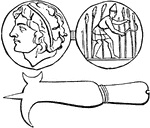
Falx
"A sickle; a scythe; a pruning knife or pruning hook; a bill; a falchion; a halbert. As culter denoted…

Pistor
"A baker, from pinsere, to pound, since corn was pounded in mortars before the invention of mills. At…
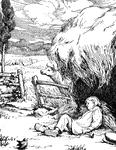
Under the Haystack
Little Boy Blue, come, blow your horn; The sheep's in the meadow, the cow's in the corn. "Where's the…
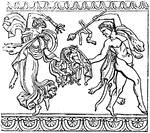
Vannus
"Vannus, A winnowing van, a bread basket, into which the corn mixed with chaff was received after trashing,…

John Bright
Bright was a British Radical and Liberal statesman, famous for the Anti-Corn Law League.



